Launched on the market in June 2020 at a price point under $200, the Realme C11 fits in our Essential segment and features a large-capacity 5000 mAh battery.
We recently put the Realme C11 through all the tests of our new Battery protocol, and provide the key points of our evaluation here.
Key specifications:
- Battery capacity: 5000 mAh
- 10W charger + micro USB cable included
- 6.5-inch, 720 x 1600, 60 Hz, HD+ IPS LCD display
- Mediatek Helio G35 (12 nm) chipset
- Tested ROM / RAM combination: 128 GB + 4 GB
About DXOMARK Battery tests: For scoring and analysis in our smartphone battery reviews, DXOMARK engineers perform a variety of objective tests over a week-long period both indoors and outdoors. This article highlights the most important results of our testing. (See our introductory and how we test articles for more details about our smartphone Battery protocol.)
Test summary
Scoring
Sub-scores and attributes included in the calculations of the global score.
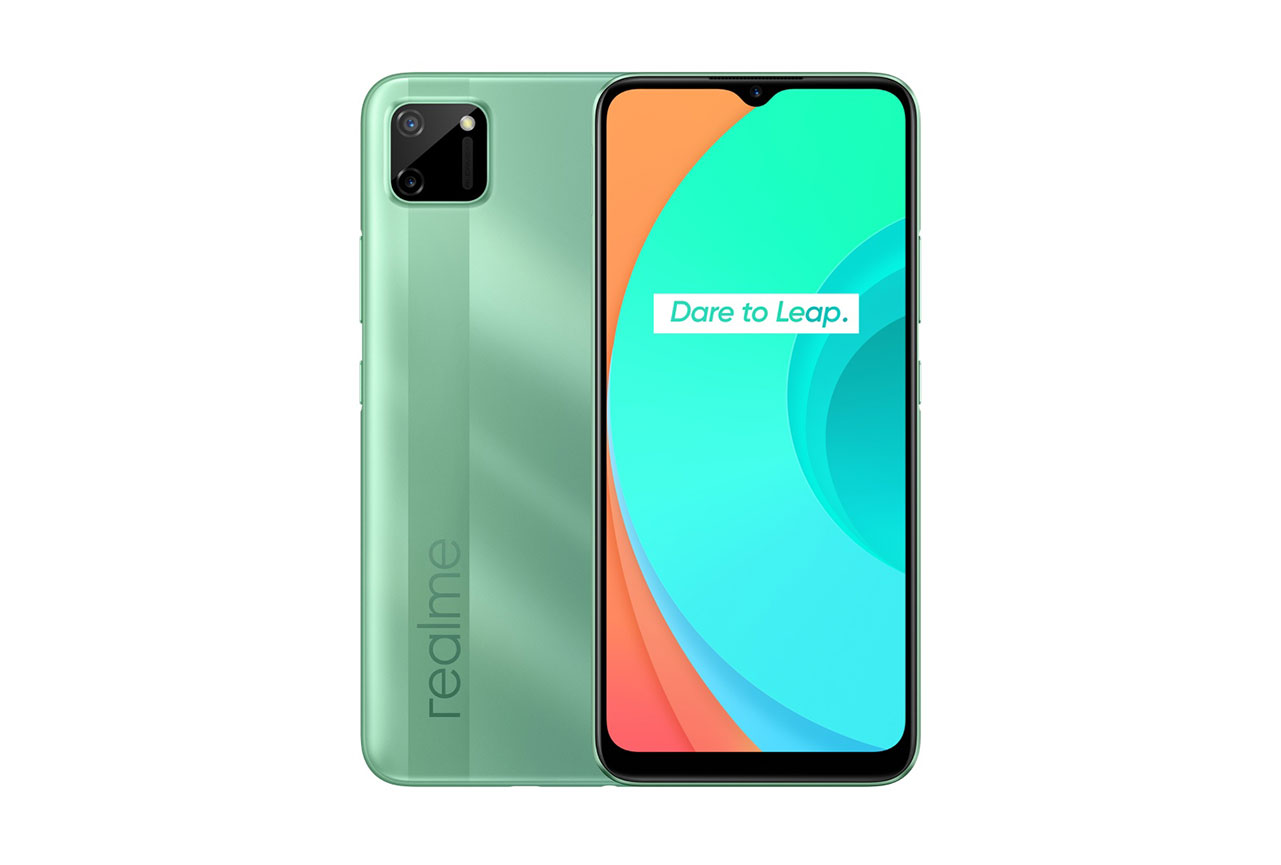 Realme C11
Realme C11

99
battery
115
Honor X7b
Best: Honor X7b (221)
140
Samsung Galaxy M51
Best: Samsung Galaxy M51 (195)
116
Samsung Galaxy M51
Best: Samsung Galaxy M51 (198)
72
Realme GT Neo 5 (240W)
Best: Realme GT Neo 5 (240W) (224)
80
Realme GT Neo 5 (240W)
Best: Realme GT Neo 5 (240W) (212)
95
Nubia RedMagic 7 Pro
Best: Nubia RedMagic 7 Pro (205)
99
Apple iPhone 14 Pro
Best: Apple iPhone 14 Pro (194)
Key performances
These key points are derived from the lab measurements during testing and do not figure into the overall score. The lab measurements, however, are used for the overall score.
1h24 autonomy
after 5-minute charge
Please be aware that beyond this point, we have not modified the initial test results. While data and products remain fully comparable, you might encounter mentions and references to the previous scores.
Position in Global Ranking

155
th
3. Honor Magic6 Lite (5800 mAh)
156
8. Honor Magic6 Lite (5300 mAh)
150
9. Realme GT Neo 5 (240W)
147
16. Samsung Galaxy S23 Ultra
142
26. Samsung Galaxy A15 LTE
137
27. Apple iPhone 13 Pro Max
136
27. Xiaomi Redmi Note 12 Pro 5G
136
37. Apple iPhone 15 Pro Max
134
37. Xiaomi Redmi Note 11 Pro 5G
134
41. Apple iPhone 14 Pro Max
133
41. Vivo X60 Pro 5G (Snapdragon)
133
41. Xiaomi Redmi Note 11S 5G
133
48. Xiaomi Redmi Note 12 5G
132
48. Xiaomi Redmi Note 10S
132
56. Oppo Reno6 Pro 5G (Snapdragon)
130
56. Samsung Galaxy S24 Ultra
130
58. Samsung Galaxy A34 5G
129
58. Samsung Galaxy A23 5G
129
58. Xiaomi Redmi Note 12 Pro+ 5G
129
58. Xiaomi Redmi Note 10 Pro
129
66. Samsung Galaxy A15 5G
127
75. Samsung Galaxy A13 5G
125
83. Apple iPhone 12 Pro Max
121
83. Samsung Galaxy A55 5G
121
86. Xiaomi Redmi Note 13 Pro 5G
120
86. Xiaomi Redmi Note 10 5G
120
98. Samsung Galaxy A14 5G
117
108. Samsung Galaxy Z Fold5
114
108. Xiaomi Mi 10T Pro 5G
114
113. Samsung Galaxy A54 5G
113
117. Motorola Moto G62 5G
112
121. Motorola Moto G9 Power
111
121. Samsung Galaxy S21 Ultra 5G (Snapdragon)
111
121. Xiaomi Redmi Note 13 Pro Plus 5G
111
127. Samsung Galaxy Z Flip5
109
127. Samsung Galaxy S24+ (Exynos)
109
131. Samsung Galaxy S21 5G (Snapdragon)
108
135. Samsung Galaxy S24 (Exynos)
107
135. Xiaomi Mi 11 Lite 5G
107
137. Samsung Galaxy A52 5G
106
141. Samsung Galaxy S22 Ultra (Snapdragon)
103
144. Motorola moto g34 5G
102
148. Samsung Galaxy S23 FE
101
148. Samsung Galaxy A35 5G
101
150. Samsung Galaxy S21 5G (Exynos)
100
150. Xiaomi Redmi 10 2022
100
155. Apple iPhone 13 mini
99
155. Samsung Galaxy Z Fold4
99
155. Vivo X80 Pro (Snapdragon)
99
160. Motorola Edge 30 Pro
98
160. Samsung Galaxy S22 Ultra (Exynos)
98
164. Samsung Galaxy A33 5G
96
167. Samsung Galaxy Z Flip4
95
167. Samsung Galaxy S22+ (Exynos)
95
167. Samsung Galaxy A53 5G
95
172. Xiaomi Redmi Note 13 5G
94
174. Apple iPhone 12 mini
93
174. Samsung Galaxy S21 Ultra 5G (Exynos)
93
177. Samsung Galaxy Z Fold3 5G
92
178. Motorola moto g54 5G
90
178. Samsung Galaxy S22 (Snapdragon)
90
184. Apple iPhone SE (2022)
84
186. Samsung Galaxy S21 FE 5G (Snapdragon)
82
190. Samsung Galaxy S22 (Exynos)
75
Position in Essential Ranking

15
th
2. Samsung Galaxy A15 LTE
137
Pros
- Provides more than 2 days of autonomy with moderate use
- Strong performance in on the go use cases
Cons
- Slow charging due to small 10W charger
- Poor charging efficiency
The Realme C11’s overall score of 61 puts it in the lower half of the rankings in our global database thus far, but it nonetheless put in a good showing among other Essential-segment devices, with satisfactory performance in our autonomy tests. Its weakest points are in charging, as the 10W charger and micro-USB cable included in the box do not power up the phone either quickly or efficiently.
We compared the Realme C11’s performance in several key categories with two other Essential segment devices, the Xiaomi Redmi 9 and the Vivo Y20s; battery capacity, charger, display type and resolution, and processor specifications for all three devices are shown in the table below.
|
Realme C11
|
Xiaomi Redmi 9 |
Vivo Y20s
|
| Battery (mAh) |
5000
|
5200 |
5000
|
| Charger (W) |
10W
|
10W |
18W
|
| Display type |
IPS LCD
|
IPS LCD |
IPS LCD
|
| Resolution |
720 x 1560
|
1080 x 2340 |
720 x 1600
|
| Processor |
Mediatek Helio G35 (12 nm)
|
Mediatek Helio G80 (12 nm) |
Qualcomm Snapdragon 460 (11 nm)
|
Autonomy (64)
How long a battery charge lasts depends not only on battery capacity but also on other aspects of the phone’s hardware and software. The DXOMARK Battery autonomy score is composed of three performance sub-scores: (1) Stationary, (2) On the go, and (3) Calibrated use cases. Each sub-score comprises the results of a comprehensive range of tests for measuring autonomy in all kinds of real-life scenarios.
85h
Light Usage
Active: 2h30/day
59h
Moderate Usage
Active: 4h/day
36h
Intense Usage
Active: 7h/day
With an overall Autonomy score of 64, the Realme C11 comes in 12 points behind the Vivo Y20s (76) and 9 points ahead of the Xiaomi Redmi 9 (55). Let’s look at some details.
Position in Global Ranking
Battery Life (moderate)

69
th
7. Samsung Galaxy A15 LTE
78h
8. Honor Magic6 Lite (5800 mAh)
77h
10. Honor Magic6 Lite (5300 mAh)
77h
16. Xiaomi Redmi Note 11S 5G
72h
22. Xiaomi Redmi Note 10 5G
70h
26. Apple iPhone 15 Pro Max
69h
27. Samsung Galaxy A15 5G
69h
29. Samsung Galaxy A13 5G
69h
31. Apple iPhone 13 Pro Max
68h
33. Xiaomi Redmi Note 10 Pro
67h
34. Samsung Galaxy S23 Ultra
67h
35. Xiaomi Redmi Note 12 5G
67h
41. Samsung Galaxy A34 5G
65h
43. Apple iPhone 14 Pro Max
65h
45. Samsung Galaxy A23 5G
64h
51. Motorola Moto G9 Power
64h
54. Xiaomi Redmi Note 12 Pro 5G
62h
55. Samsung Galaxy A14 5G
62h
56. Xiaomi Redmi Note 11 Pro 5G
62h
57. Xiaomi Redmi Note 10S
61h
60. Samsung Galaxy A54 5G
60h
78. Samsung Galaxy A55 5G
57h
85. Samsung Galaxy S24 Ultra
56h
87. Samsung Galaxy A52 5G
56h
88. Xiaomi Redmi Note 13 Pro 5G
56h
90. Xiaomi Redmi Note 12 Pro+ 5G
55h
91. Realme GT Neo 5 (240W)
55h
100. Xiaomi Mi 11 Lite 5G
54h
101. Samsung Galaxy Z Fold5
54h
105. Motorola moto g54 5G
53h
107. Nubia RedMagic 7 Pro
53h
113. Motorola Edge 20 Pro
52h
123. Xiaomi Mi 10T Pro 5G
51h
127. Vivo X60 Pro 5G (Snapdragon)
51h
128. Xiaomi Redmi Note 13 5G
50h
134. Samsung Galaxy S21 5G (Snapdragon)
50h
136. Samsung Galaxy A35 5G
49h
137. Samsung Galaxy A53 5G
49h
142. Samsung Galaxy S24+ (Exynos)
49h
144. Xiaomi Redmi Note 13 Pro Plus 5G
49h
145. Samsung Galaxy S24 (Exynos)
49h
146. Apple iPhone 12 Pro Max
49h
147. Samsung Galaxy Z Fold4
49h
149. Samsung Galaxy S21 Ultra 5G (Snapdragon)
48h
151. Oppo Reno6 Pro 5G (Snapdragon)
48h
154. Motorola Edge 30 Pro
47h
155. Samsung Galaxy A33 5G
47h
156. Samsung Galaxy S22 Ultra (Snapdragon)
47h
157. Samsung Galaxy S23 FE
47h
159. Samsung Galaxy Z Flip5
46h
160. Samsung Galaxy S21 5G (Exynos)
46h
162. Nubia RedMagic 6 Pro
46h
167. Samsung Galaxy S22 Ultra (Exynos)
44h
170. Vivo X80 Pro (Snapdragon)
43h
172. Samsung Galaxy Z Fold3 5G
43h
173. Samsung Galaxy Z Flip4
42h
175. Samsung Galaxy S21 Ultra 5G (Exynos)
41h
177. Apple iPhone 13 mini
41h
178. Apple iPhone 12 mini
40h
180. Samsung Galaxy S22+ (Exynos)
40h
181. Samsung Galaxy S22 (Snapdragon)
39h
184. Samsung Galaxy S21 FE 5G (Snapdragon)
38h
187. Apple iPhone SE (2022)
37h
189. Samsung Galaxy S22 (Exynos)
35h
Position in Essential Ranking
Battery Life (moderate)

13
th
3. Samsung Galaxy A15 LTE
78h
10. Xiaomi Redmi Note 10S
61h
Stationary
Vivo Y72 5G
Best: Vivo Y72 5G (104)
A robot housed in a Faraday cage performs a set of touch-based user actions during what we call our “typical usage scenario” (TUS) — making calls, video streaming, etc. — 4 hours of active use over the course of a 16-hour period, plus 8 hours of “sleep.” The robot repeats this set of actions every day until the device runs out of power.
After being fully charged, the Realme C11 took exactly 61 hours to run out of power in our TUS testing. Although this was better by 8 hours than the Xiaomi Redmi 9, it was 10 hours less than the Vivo Y20s.
Typical Usage Scenario discharge curves
On the go
Samsung Galaxy M51
Best: Samsung Galaxy M51 (96)
Using a smartphone on the go takes a toll on autonomy because of extra “hidden” demands, such as the continuous signaling associated with cellphone network selection, for example. DXOMARK Battery experts take the phone outside and perform a precisely defined set of activities while following the same three-hour travel itinerary for each device.
Realme C11 does well in autonomy, especially when on the go.
The Realme C11’s On the go performance was quite similar to that of the Vivo Y20s, with good showings in all use cases.
Autonomy for on the go use cases (full charge)
Calibrated
Samsung Galaxy M51
Best: Samsung Galaxy M51 (100)
For this series of tests, the smartphone returns to the Faraday cage and our robots repeatedly perform actions linked to one specific use case (such as gaming, video streaming, etc.) at a time. Starting from an 80% charge, all devices are tested until they have expended at least 5% of their battery power.
The Realme C11’s battery struggled in a gaming use case.
The Realme C11 put in a good overall performance in our calibrated use testing, showing particularly good results in music streaming compared to its competitors. However, its autonony when gaming as very low.
Autonomy for calibrated use cases (full charge)
Charging (52)
The DXOMARK Battery charging score is composed of two sub-scores, Full charge and Quick boost. Full charge tests assess the reliability of the battery power gauge; measure how long it takes to charge a battery from zero to 80% capacity and from 80 to 100%; and measure how long and how much power the battery takes to go from an indicated 100% to an actual full charge. With the phone at different charge levels (20%, 40%, 60%, 80%), Quick boost tests measure the amount of charge the battery receives after being plugged in for 5 minutes.
Power consumption and battery level during full charge
Full charge
Black Shark 5 Pro
Best: Black Shark 5 Pro (121)
Due to its small 10W charger and use of a micro-USB cable, it takes the Realme C11 more than three hours to achieve a full charge, putting it on par with the Redmi 9; however, the C11’s time of 1 hour 55 minutes to go from zero to 80% full is the worst in our database so far (the Redmi beats it by a half-hour, though it takes longer for the Redmi to go from 80% to 100% than for the Realme).
Position in Global Ranking
Charging Time 0-80%

188
th
1. Realme GT Neo 5 (240W)
0h08
23. Oppo Reno6 Pro 5G (Snapdragon)
0h22
30. Xiaomi Redmi Note 12 Pro+ 5G
0h24
31. Vivo X80 Pro (Snapdragon)
0h24
36. Xiaomi Redmi Note 13 Pro Plus 5G
0h26
56. Xiaomi Redmi Note 13 Pro 5G
0h31
61. Xiaomi Redmi Note 12 Pro 5G
0h33
68. Samsung Galaxy S23 Ultra
0h37
69. Samsung Galaxy S22+ (Exynos)
0h37
73. Samsung Galaxy S24 Ultra
0h38
74. Xiaomi Redmi Note 11 Pro 5G
0h38
77. Samsung Galaxy S22 Ultra (Snapdragon)
0h39
78. Samsung Galaxy S22 Ultra (Exynos)
0h40
79. Vivo X60 Pro 5G (Snapdragon)
0h40
83. Samsung Galaxy S24+ (Exynos)
0h42
88. Xiaomi Redmi Note 12 5G
0h44
93. Samsung Galaxy S21 Ultra 5G (Snapdragon)
0h46
94. Honor Magic6 Lite (5300 mAh)
0h47
97. Samsung Galaxy Z Flip5
0h48
99. Samsung Galaxy S21 5G (Exynos)
0h48
101. Samsung Galaxy S24 (Exynos)
0h49
102. Samsung Galaxy S21 5G (Snapdragon)
0h49
103. Xiaomi Redmi Note 11
0h49
104. Samsung Galaxy S23 FE
0h49
106. Samsung Galaxy A23 5G
0h49
109. Samsung Galaxy S22 (Snapdragon)
0h50
111. Samsung Galaxy Z Fold5
0h51
112. Samsung Galaxy S22 (Exynos)
0h51
113. Samsung Galaxy A35 5G
0h51
115. Samsung Galaxy A34 5G
0h51
115. Apple iPhone SE (2022)
0h51
117. Samsung Galaxy S21 Ultra 5G (Exynos)
0h51
118. Apple iPhone 12 mini
0h52
119. Xiaomi Redmi Note 10S
0h52
120. Xiaomi Redmi Note 10
0h52
122. Samsung Galaxy A55 5G
0h52
123. Samsung Galaxy A54 5G
0h52
125. Xiaomi Redmi Note 13 5G
0h53
126. Samsung Galaxy S21 FE 5G (Snapdragon)
0h53
129. Xiaomi Redmi Note 11S 5G
0h54
129. Samsung Galaxy A33 5G
0h54
131. Samsung Galaxy A15 LTE
0h54
132. Samsung Galaxy A15 5G
0h54
133. Apple iPhone 15 Plus
0h54
134. Xiaomi Redmi Note 10 Pro
0h55
135. Apple iPhone 15 Pro Max
0h56
136. Samsung Galaxy Z Fold4
0h56
137. Honor Magic6 Lite (5800 mAh)
0h56
139. Samsung Galaxy A53 5G
0h57
140. Samsung Galaxy Z Flip4
0h57
141. Apple iPhone 12 Pro Max
0h57
142. Apple iPhone 13 mini
0h57
143. Samsung Galaxy Z Fold3 5G
0h57
149. Apple iPhone 13 Pro Max
1h01
153. Apple iPhone 14 Plus
1h03
159. Apple iPhone 14 Pro Max
1h06
165. Motorola moto g34 5G
1h12
167. Samsung Galaxy A52 5G
1h15
172. Xiaomi Redmi Note 10 5G
1h22
174. Xiaomi Redmi 10 2022
1h25
177. Motorola moto g54 5G
1h26
178. Motorola Moto G62 5G
1h26
179. Samsung Galaxy A14 5G
1h28
180. Samsung Galaxy A13 5G
1h30
187. Motorola Moto G9 Power
1h53
Position in Essential Ranking
Charging Time 0-80%

16
th
5. Samsung Galaxy A15 LTE
0h54
11. Samsung Galaxy A14 5G
1h28
Quick boost
Realme GT Neo 3
Best: Realme GT Neo 3 (111)
Plugging in the Realme smartphone for 5 minutes (regardless of the amount of power left in the battery) will provide about 1 hour and 25 minutes of autonomy, which is poor but not unexpected, given the 10W charger.
| |
| Realme C11 | Xiaomi Redmi 9 | Vivo Y20s |
| Autonomy boost (hh:mm) | 20% | 1:24 | 1:16 | 2:45 |
| 40% | 1:24 | 1:17 | 2:36 |
| 60% | 1:24 | 1:21 | 2:32 |
| 80% | 1:22 | 1:18 | 1:45 |
| Percentage boost | 20% | 3.6 % | 3.6 % | 5.5 % |
| 40% | 3.6 % | 3.7 % | 5.2 % |
| 60% | 3.6 % | 3.9 % | 5.1 % |
| 80% | 3.5 % | 3.7 % | 3.5 % |
| Energy consumed | 20% | 990 mWh | 963 mWh | 1508 mWh |
| 40% | 994 mWh | 976 mWh | 1425 mWh |
| 60% | 999 mWh | 1027 mWh | 1387 mWh |
| 80% | 971 mWh | 988 mWh | 962 mWh |
Efficiency (64)
The DXOMARK power efficiency score consists of two sub-scores, Charge up and Discharge rate, both of which combine data obtained during robot-based typical usage scenario testing, outdoor mobility testing, charging evaluation, and power measurements, and then take into consideration the device’s battery capacity.
Charge up
Nubia RedMagic 7 Pro
Best: Nubia RedMagic 7 Pro (105)
The Realme’s charger efficiency is quite low at 84.7% — not as low as the Redmi 9 (82.6%), but a bit behind the Vivo Y20s (85.4). That said, the Realme C11’s in-box charger has the lowest power consumption compared to its rivals whether the smartphone is plugged in or unplugged.
Discharge
Apple iPhone 13 Pro
Best: Apple iPhone 13 Pro (121)
The Realme C11 has average power consumption both during active hours and slightly more than average at night. It does very well for both 3G calling and music streaming. That said, it consumes the most power in our gaming use case.
Conclusion
The Realme C11 comes in second among the Essential devices in this comparison for autonomy (and second overall), offering 58 hours of average use, and more than three days with light use. Where it struggles is with charging, as its included 10W charger and micro-USB cord (instead of the USB-C cord like its competitors) simply cannot fill up its large 5000 mAh battery quickly nor efficiently.
In the Press



 155th
155th
 15th
15th
 69th
69th
 13th
13th


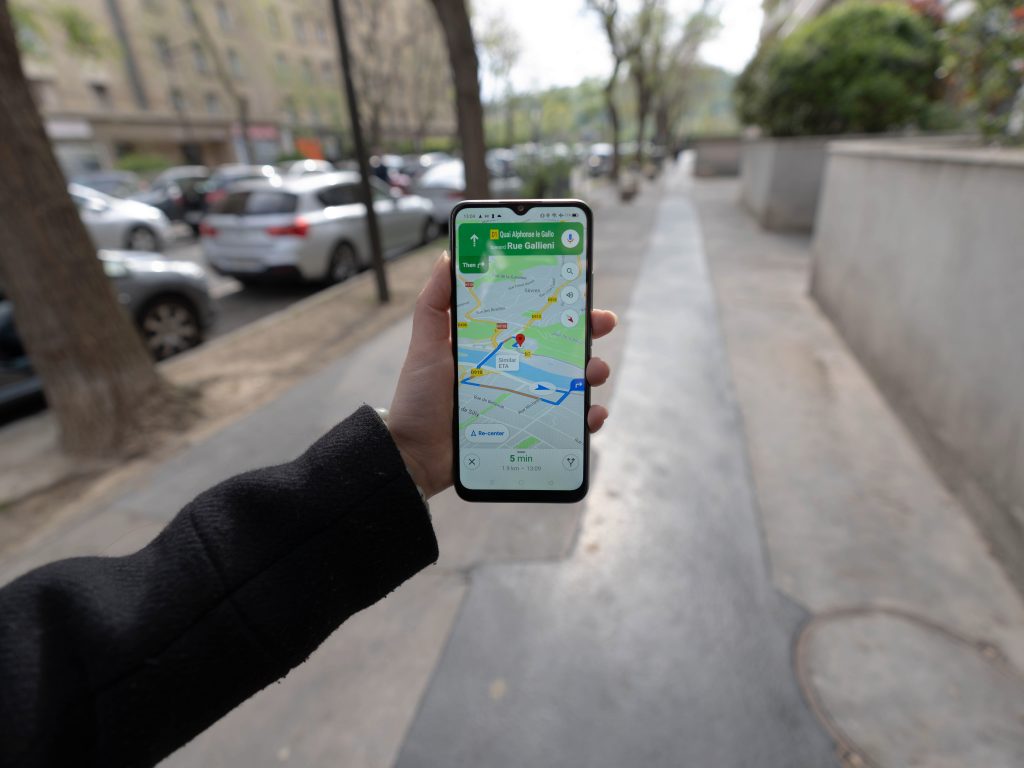
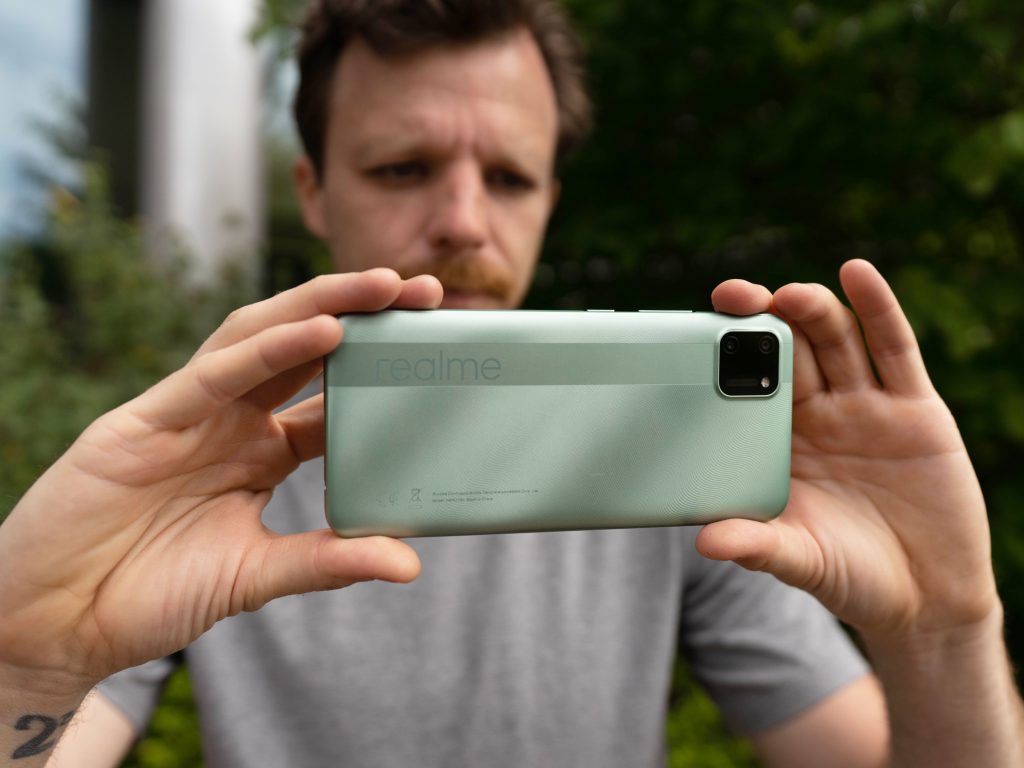

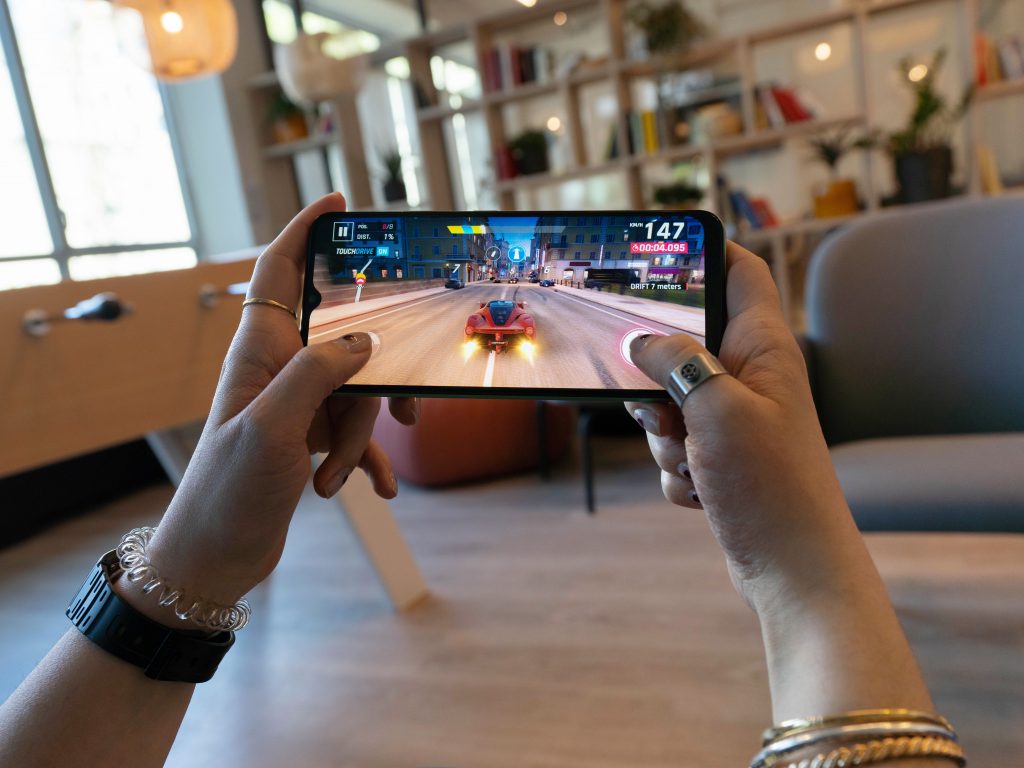

 188th
188th
 16th
16th





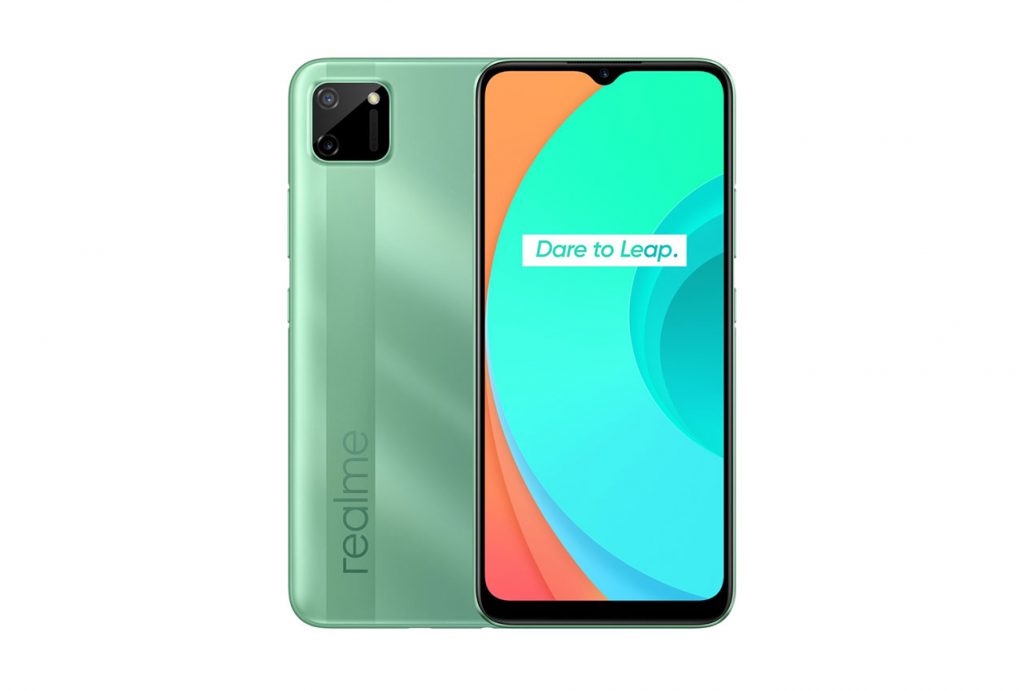


DXOMARK encourages its readers to share comments on the articles. To read or post comments, Disqus cookies are required. Change your Cookies Preferences and read more about our Comment Policy.